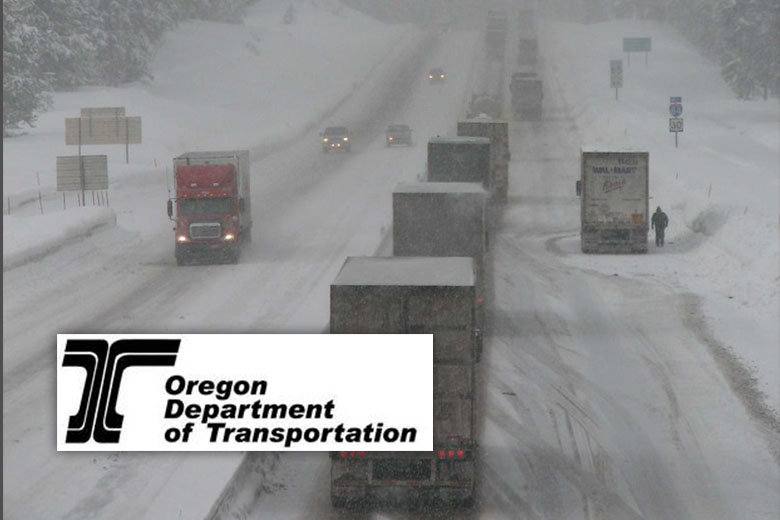
Reminder, Low Visibility Driving is Not a Time for Impatience
By Garrett Christensen on Monday, November 21st, 2022 in More Top Stories Northeastern Oregon News
OREGON – (Information from the Oregon State Police and Oregon Department of Transportation) As winter driving conditions set in for the season, roads get more hazardous. Ice, snow and fog can all make traveling quite challenging for even the most experienced winter drivers. As a reminder, it may be necessary to adjust one’s driving style and their preferred travel speed to match both conditions and the patterns of other drivers, especially in low visibility.
A recent fatal crash report for the Oregon State Police out of Jefferson County exemplifies the need to adjust driving to match conditions. From the OSP:
“On Wednesday, November 16, 2022, at approximately 7:40 PM, Oregon State Police Troopers and emergency personnel responded to a two-vehicle crash on Hwy 26 near milepost 114.
Preliminary investigation revealed a gray Toyota Tacoma, operated by Audry Cooper McHugh (29) of Bend, was passing several vehicles in the fog when it collided head-on with a westbound gold Chevrolet Malibu, operated by Saralee Spino-McCormaack (29) of Warm Springs.
Spino-McCormack and the right rear passenger, a 13-year-old male, sustained fatal injuries and were pronounced deceased. A 14-year-old female passenger was transported to an area hospital with serious injuries. McHugh was transported to an area hospital with serious injuries.
Hwy 26 was closed for approximately 2 hours while the OSP Collision Reconstruction Unit investigated the scene.
OSP was assisted by Jefferson County Fire and EMS, Jefferson County Sheriff’s Office, ODOT.”
To combat accidents such as this, The Oregon Department of transportation has various recommendations for driving in low visibility conditions:
- “Slow down. Every year, “driving too fast for conditions” shows up in the top five most common reasons for crashes.
- Use your low beams. High beams will disperse in thick fog or snow, making visibility worse for you and other drivers.
- Turn on your rear fog lamps, if your vehicle is equipped. They greatly aid visibility for drivers approaching from the rear.
- If you suddenly encounter a severe loss of visibility, pull off the pavement as far as possible. Stop, turn off your lights, set the emergency brake and take your foot off the brake to be sure the taillights are not illuminated. Turn on your emergency flashers.
- If you can’t pull off the roadway, slow down, turn on your low beam headlights and sound the horn occasionally. Use the white fog line or roadside reflectors if necessary to help guide you.
- Never stop in the travel lanes.”
Specifically for foggy conditions:
- “Slow down and disengage your cruise control.
- Use your low beams; high beams will reflect back thick fog, making visibility worse for you and other drivers.
- Keep the view clear. Avoid fogged windows by regularly using the defroster and windshield wipers. The air conditioning setting will help keep moisture from building up inside.
- Increase following distance to ensure enough time to stop safely.
- Use the right edge of the road, white fog line or roadside reflectors as a guide. Do not change lanes or pass other vehicles unless necessary.
- If you pull off the road, pull over as far as possible, turn off your headlights and turn on your hazard lights.
ODOT Further recommends using low-beam headlights in the daytime to make vehicles more visible during winter months, even in clear conditions. For more information on winter driving safety, visit Oregon Department of Transportation : Winter Travel Tips : State of Oregon

